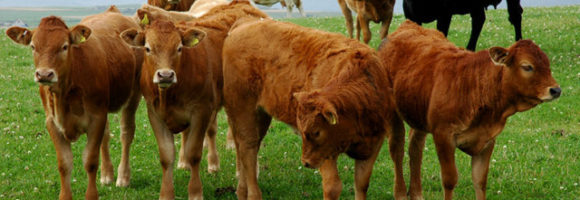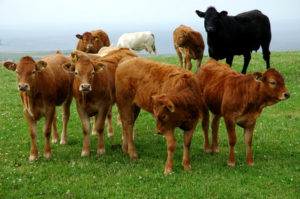Tetanus in Cattle

Though relatively rare in cattle, tetanus is a relatively common disease in other types of livestock and can result in severe losses. Caused by the bacterium Clostridium tetani, which is found in the soil and the guts of humans and animals, tetanus can result in all of the following symptoms:
- Stiffness or general reluctance to move
- Lockjaw
- Muscle twitching and tremors
- Unsteady gait with tail held out stiffly
- Protruding third eyelid
- Anxiousness caused by sudden movements or handling
- Bloating
 At its later stages, tetanus may also be characterized by collapse and lying on the side with legs held out stiffly. Spasm and death may also occur.
At its later stages, tetanus may also be characterized by collapse and lying on the side with legs held out stiffly. Spasm and death may also occur.
Tetanus begins when the organism gets into wounded or damaged tissue. In the absence of oxygen, the bacteria then multiply and produces a local infection. As the bacteria grows, it produces toxins that spread along the nerves to the brain. Due to the nature of the disease, the time between infection and disease can be as little as two to three days or it can take up to four weeks or more to develop. While the disease is seen in cattle of all ages, it most commonly occurs during calving and castration.
Cattle in the early stages of tetanus respond to treatment better than most other types of livestock. Sedatives and relaxants can aid in recovery, but cattle with full tetanus are not likely to recover.
If your Arizona cattle have passed away, The Last Ride Arizona provides large animal removal service that is professional and courteous. Call or Text Us Today: (602) 819-6854